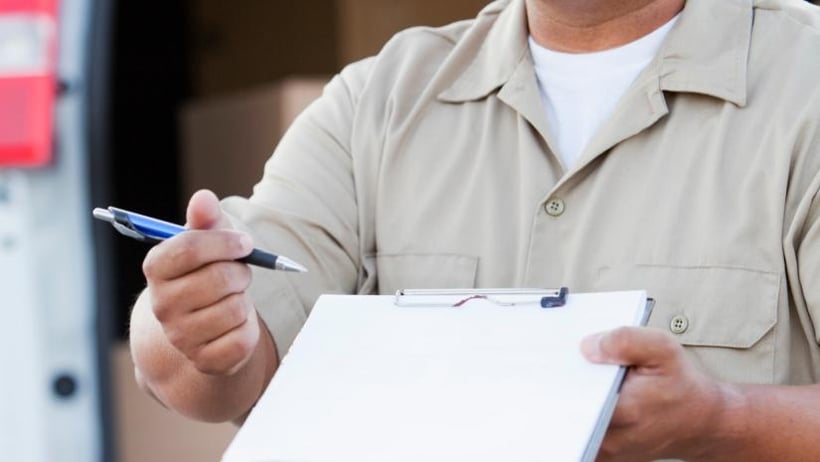
Care must be taken when receiving food orders as pests or pathogens may be introduced to the workplace. You need to check deliveries carefully to ensure food safety. To do this, ensure that the area where you receive food is clean, well-lit, dry and free from pests.
When you receive deliveries, perform the following checks.
Driver and vehicle checks
Always check:
- that both the vehicle and driver look clean and hygienic
- for any signs of pests, both on the incoming food and within the vehicle
- that food and non-food items, especially chemicals, have been kept separate in the vehicle
Temperature checks
Always check for temperature compliance – specifically:
- refrigerated goods should be delivered at 4°C / 40°F or less
- frozen goods should be delivered at -18°C / 0°F or below
Ice cream is the exception to the frozen goods rules. Ice cream should be delivered at a temperature between -14°C to -12°C / 7°F to 10°F
Don’t guess the temperature of the food. Always use a calibrated thermometer to check that temperature rules are being adhered to.
Observation checks (sight and smell)
Check for any signs of:
- deterioration such as a strange colour or smell
- broken, leaking or damaged packaging
- pests, including gnawed packages, droppings or pests themselves
- thawing of frozen goods
- swollen or dented cans and ensure that their seals are in good condition
- packaging for dried goods have moisture stains
Also, never accept home-canned foods. Home-canned foods carry a high risk of botulism.
Labelling and paperwork checks
It’s important to check that labels and paperwork are present and correct. Labels on non-fresh produce contain lot codes which are referred to when products are recalled. If you don’t have this information, you may not know what to do with the food items in case of a recall.
- always check that the labels have lot codes and ingredient information
- check for government approval stamps on regulated foods
- review the expiry dates on the labels to check that items are not out of date, and are not likely to go out of date within the time frame that you need to use them
- keep all invoices and receipts
- if you have purchased tagged seafood, keep the tags for at least 90 days
Employee training
It goes without saying, but make sure your employees know to perform these checks (and how to do so). This will help you to avoid the costly mistakes associated with accepting food deliveries that are:
- spoiled or past the best before date
- contaminated (e.g. with bacteria or other contaminants)
- infested with weevils or other pests
Food handling mistakes can have serious consequences. Train and certify your Food Handlers to protect your customers and your business.




